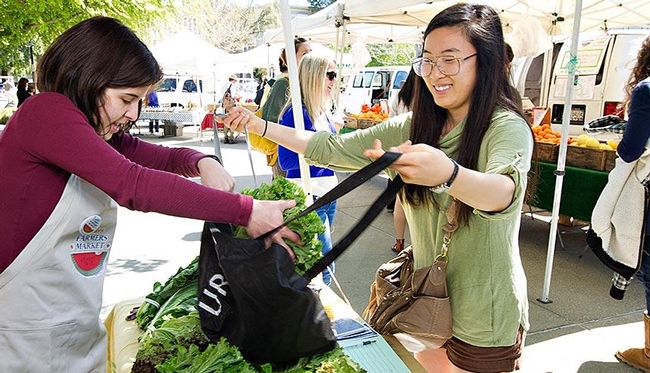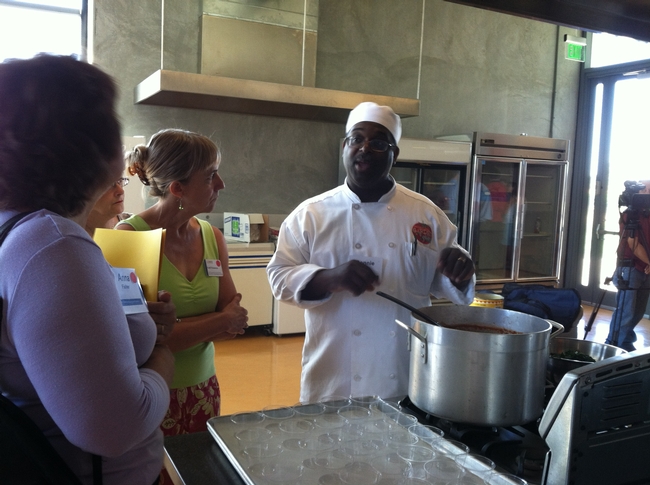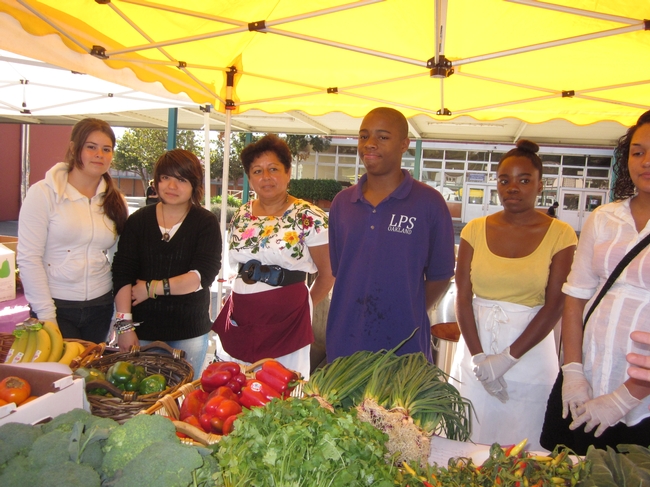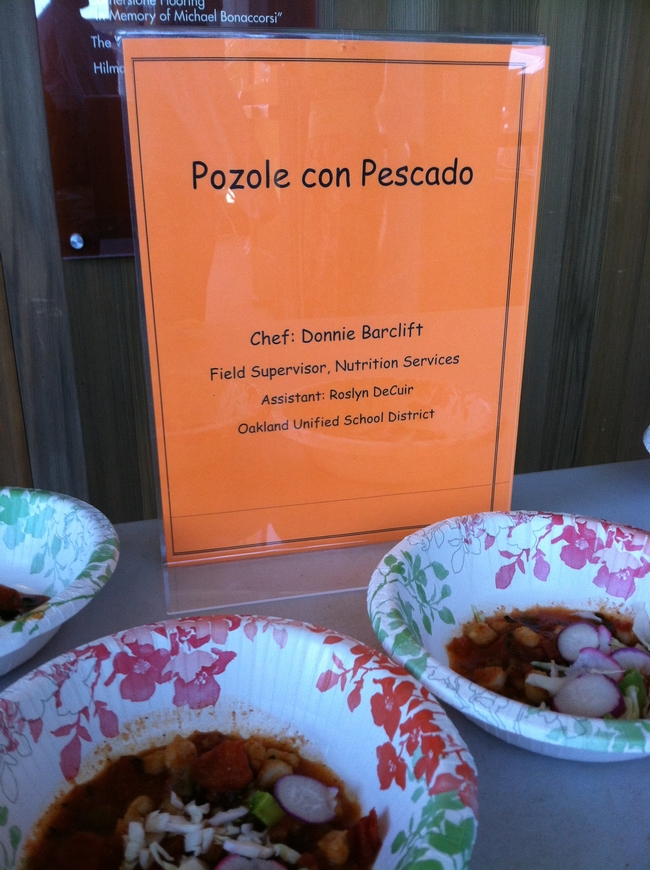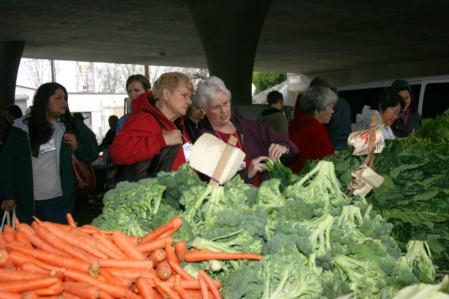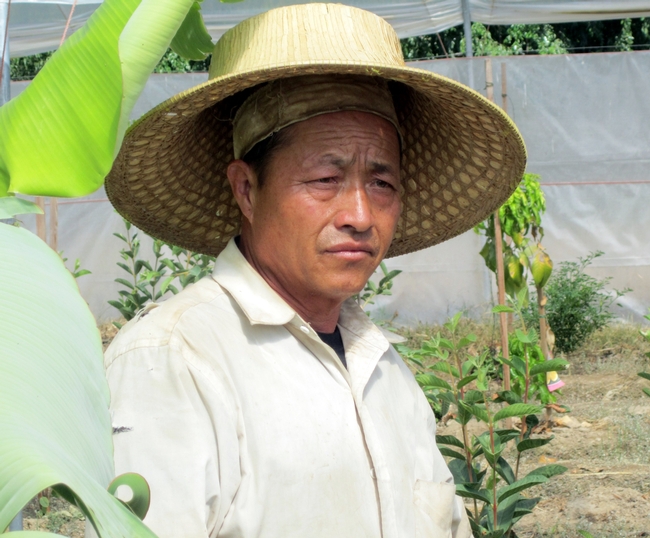Posts Tagged: Gail Feenstra
Direct-marketing farms have double the regional impact
Sacramento-area farmers and ranchers who sell their products directly to consumers generate twice as much regional economic impact per dollar of output as do area food producers who don't engage in direct marketing, reports a UC Davis agricultural economist and a team of UC Cooperative Extension researchers.
The newly released study of the four Sacramento region counties of El Dorado, Placer, Sacramento and Yolo found that direct-marketing food producers had a regional output multiplier of 1.86 compared to just 1.42 for producers not involved in direct marketing.
Direct-marketing channels include farmers markets, roadside farm stands and community-supported agriculture programs that provide consumers with regular deliveries of farm products.
“The direct marketers make up a relatively small part of the Sacramento region's agricultural sector, but this study demonstrates that these food producers generate both economic and qualitative benefits for the region,” said study leader Shermain Hardesty, a UC Cooperative Extension specialist in the UC Davis Department of Agricultural and Resource Economics.
“It's important that the economic contributions of direct-marketing farmers and ranchers be taken into consideration so that regional policies can be enhanced to support and nurture the growth of these food producers,” Hardesty said.
The regional economic impacts identified in the study are threefold: revenue received directly by the agricultural producer; a ripple effect when the food producer purchases inputs in the region; and a secondary ripple when the producer and the suppliers of goods and services to the producer, in turn, spend more money in the region on household goods and services.
The report, along with separate economic impact reports specifically for El Dorado, Placer and Yolo counties, is available online.
Sacramento region direct marketers
In the four-county Sacramento region, direct-marketing food producers are a relatively small segment of the total agricultural sector, accounting for 19 percent of the region's farms and only 4 percent of its agricultural production.
The direct-marketing farm operations tend to be smaller and more labor-intensive, and source more of their inputs locally than do nondirect-marketing operations in the area.
The new study was based on economic information gathered from 88 local farmers and ranchers, including 31 vegetable farmers, 48 orchard or vineyard growers and nine livestock producers, each of whom generated at least $1,000 in annual sales from marketing directly to consumers.
After the data were collected, they were incorporated into an economic modeling program to estimate the economic impacts of producers engaged in direct marketing.
Study highlights
Other findings from the report include:
• Sacramento region direct-market producers averaged just $164,631 in one year of sales compared to $568,105 for those not engaged in direct marketing.
• Seventy-three percent of the direct marketers also sold through wholesale channels.
• Overall, the direct-market producers generated 44 percent of their total revenues through direct-marketing channels, 55 percent through wholesale channels and 1 percent through commodity markets.
• For every $1 million of output, the direct-market producers generated a total of 31.8 jobs in the Sacramento region while the nondirect-market producers generated only 10.5 jobs.
• Direct marketers purchased 89 percent of their inputs within the region while the nondirect-market producers purchased 45 percent of their inputs in the region. This local sourcing of inputs was the primary factor responsible for the direct-market producers having a greater economic impact on the region than nondirect-market producers.
Collaborators and funding
Hardesty collaborated on the study with Libby Christensen, Erin McGuire and Gail Feenstra, all of UC Davis; and Chuck Ingels, Jim Muck, Julia Boorinakis-Harper, Cindy Fake and Scott Oneto, all with the UC Cooperative Extension.
Funding for the study was provided by the University of California Division of Agriculture and Natural Resources Competitive Grants Program.
Farm to school programs increase children's access to fresh, seasonal produce
Farm to school programs increase children's access to fresh, seasonal produce
Eating more locally grown food could improve the health of students and the local economy
If kids are introduced to fruits and vegetables at school, will they be more likely to choose to eat produce on an ongoing basis? That's the hope of University of California researchers who studied schools that served meals prepared with local produce.
The dramatic rise of obesity and diabetes in children has prompted nutrition experts to encourage parents to offer their children a more healthful diet with more produce. Yet fewer than 10 percent of California children consume the minimum recommended daily servings of fruits and vegetables, according to a 2009 report by the Centers for Disease Control and Prevention.
"School nutrition program directors are in the driver's seat. They're already making good decisions about changing school food across their districts," said Gail Feenstra, food systems analyst for the University of California's Sustainable Agriculture Research and Education Program, who led the study. "We wanted to bring the resources of the university to bear and help them move forward."
For this three-year project, the UC researchers worked with three school districts: Oakland Unified School District, Winters Joint Unified School District (west of Sacramento) and Enterprise Elementary School District in Redding.
"The objective was to connect regional growers with school lunch programs so they could buy more fresh seasonal regional food for the school meal program," Feenstra said. "To encourage school gardening, we provided professional development for the school nutrition program directors, teachers, parents and others. We also measured kids' consumption of fresh seasonal regional food and their preferences for fresh vegetables."
The results have been positive: all three districts increased their purchases of fresh, seasonal, local produce. The definition of "local" varies depending on the location of the school district and time of year, but is generally within a 250-mile radius. Much of the success is due to the creativity of school chefs in modifying their purchasing practices and making delicious meals from the fresh produce.
Oakland Unified chef Donnie Barclift won an award from celebrity chef Rachael Ray for his recipe for pozole con pescado, a zesty tomato-based soup filled with fish and vegetables.
"I take great pride in the work we are doing to integrate into our menus, not just fresh, but fresh local seasonal produce," said Barclift. "It's also important that we are teaching kids where their food comes from and the importance of fresh produce in their daily diets. It's wonderful to get food fresh from a farm instead of a factory."
Oakland Unified School District spent $794,000 on produce the first year, of which 11 percent was local. In the final year, Oakland's total produce purchases increased to $1.36 million with 31 percent locally sourced. Winters Joint Unified School District's produce purchases leaped from $7,707 and 6.6 percent local to $43,000 and 51 percent local. Enterprise Elementary School District doubled its produce spending from $89,000 and 4.4 percent local to $177,000 and 20 percent local.
During the three-year project, student participation in Oakland's school meal program increased by 17 percent. Oakland doubled the number of its farmstands on the school grounds from 12 to 25 schools, involving more parents and community members and increasing students' access to fresh produce. The school district also created a district-specific branding of its farm to school program: Oakland Eats Garden Fresh. To ensure the program continues, OUSD has hired a full time Farm to School coordinator.
In Winters, students more than doubled their consumption of fruit and total produce. Rominger Middle School planted a new school garden that is contributing to students learning about growing their own food. WJUSD students' parents reported a significant increase in their children's consumption of kiwi fruit at home and a slight increase in overall consumption of vegetables.
Students were asked to identify, taste and rate fresh, raw produce such as asparagus, cucumber, bell pepper, cabbage and kiwi fruit. Overall, the students improved their ability to identify the selected fruit and vegetables. Students reported that they would ask a family member to purchase spinach and bell pepper and that they would eat them as a snack.
"We were excited to learn that the students exposed to this program were able to identify new types of produce and that they would ask their families to purchase these items at home. This is an important step towards increasing children's consumption of fruits and vegetables," said Sheri Zidenberg-Cherr, UC Cooperative Extension specialist in the Department of Nutrition and co-director of the Center for Nutrition in Schools at UC Davis
Each school district has reaped other benefits from the project. Oakland developed a new bid process for buying produce to specify that products had to come from local farms and was able to increase local produce purchases by 40 percent.
In Winters, parents, farmers and others formed a nonprofit farm to school organization to raise money so the school district can continue the farm to school efforts. The money will help buy fresh local produce, support school gardens and fund other related activities.
In Redding, a grower began acting as an aggregator, delivering local produce from several local farms to the school district's kitchen so the school could work with one supplier and write a single check. Enterprise Elementary School District has also added nutrition education to the professional development offered to its staff.
UC Agriculture and Natural Resources has awarded Zidenberg-Cherr's research group a grant to work on the "Shaping Healthy Choices Program" with two other school districts – Elk Grove Unified School District in Sacramento County and Sylvan Union School District in Stanislaus County. They are studying how a multi-component program that includes classroom nutrition education, family and community participation, regional produce procurement, nutrition services and school gardening can influence students' food choices, critical thinking skills and health-related outcomes. This is a highly collaborative project that relies on expertise from the Department of Nutrition, Human Ecology, Population Health and Reproduction at UC Davis, the UC Davis Agricultural Sustainability Institute, UC Davis Betty Irene Moore School of Nursing and UC Cooperative Extension in Sacramento and Stanislaus counties. The UC researchers are working with school staff and school wellness committee members to ensure the schools will be able to continue the Shaping Healthy Choices Program on their own.
Feenstra sees the key to encouraging children to eat fruits and vegetables throughout their lives as requiring more than putting the produce on their plates at school. Enticing them to try new items, getting them interested in growing food in gardens, teaching them about nutrition and involving their parents all play important roles in the learning process, she said.
"Since Cooperative Extension is a part of so many different counties, as we move forward in farm to school, I think that making sure that we involve Cooperative Extension and the nutrition education component in addition to school gardening and procurement is a really important way to think comprehensively about where we need to go next," Feenstra said.
In addition to improving children's access to fresh, seasonal produce, farm to school programs provide new markets for regional farmers.
This farm to school study was funded by a grant from the California Department of Food and Agriculture Specialty Crop Block Grant Program.
Prize-winning recipe created by Donnie Barclift, Oakland Unified School District chef
Pozole con Pescado
Servings: 50 one-cup servings
Raw Atlantic Pollock. As an option, you may use other types of fish such as cod or tilapia.
1. Coat baking pan with oil or melted butter.
2. Lay filets in baking pan.
3. Combine the garlic and chili powder and cumin.
4. Lightly sprinkle seasoning blend on filets and bake until done in a pre-heated 350 degree oven (about 5 to 7 minutes).
5. Once done, allow fish to sit for five minutes then cut into chunks, about 1-inch cubes.
1. Saute celery and onions in 4 TBSP olive oil until onions are translucent.
1.5 cups celery, chopped
1.5 cups onion, fresh, diced
2. Combine the sauteed onion and celery with the ingredients below in a soup pot and bring to a simmer for 20 minutes, stirring occasionally.
2 #10 can tomatoes, crushed
1 #10 can + 5 cups yellow hominy (undrained)
14 oz diced green chilis
3/4 cup chili powder
3 TBSP garlic, granulated
2 TBSP cumin
1 TBSP cayenne pepper, ground
1/2 tsp ground black pepper
3. Add kale during the last 10 minutes
4. Wash and shred the cabbage. Serve 1/8 cup on top of soup for garnish.
1.5 lb cabbage, fresh, raw, chopped
Serving the pozole:
To insure proper fish portioning, portion 1 cup of the soup into a serving bowl, then float 1 ounce of fish chunks on the soup. Serve with warm, whole-grain flat bread or another bread item that equals 1 grain bread. Half of a 6-inch whole grain flat bread is the portion. Heat in a warmer, cut into quarters before serving and serve 2 quarters of bread per bowl of pozole.
New tool for food systems researchers
After systematically compiling the literature and reviewing a sample of about a third of the articles, the team identified three recurring strategic challenges facing practitioners: (1) an economic challenge of finding prices that balance farmers' incomes with food access for low-income consumers, (2) a social challenge to confront racial and class injustice, and (3) a political challenge of reconciling incremental and systemic change strategies. The authors elaborate on these challenges, giving examples such as the debate surrounding conventionalization of organics, and the issue of cultural privilege, referencing articles from the bibliography to demonstrate the ways they are framed by practitioners and academics.
"Our hope is to foster a conversation about community food systems in which research and practice are mutually reinforcing," says co-author David Campbell, UC Cooperative Extension specialist in the Department of Human and Community Development at UC Davis. "We started compiling the bibliography to help researchers focus on the most pressing questions for practitioners, but it's also a resource that practitioners can use to find academic work that speaks to the promise and limits of existing strategies. Already we are seeing a significant improvement in the quality and utility of research being done by UC Davis graduate students."
The paper concludes with suggestions for research that responds to the challenges and unites practitioners and academics. Campbell and co-authors Gail Feenstra, food systems analyst for the University of California Sustainable Agriculture Research and Education Program, and graduate student Ildi Carlisle-Cummins, invite others to use and build on the community food systems bibliography to add to the dialog between theory and practice. The bibliographies compiled by the UC Davis researchers are available at http://www.sarep.ucdavis.edu/sfs/CFSresources.
The Journal of Agriculture, Food Systems, and Community Development article "Community food systems: Strengthening the research-to-practice continuum," can be downloaded for free until Aug. 31, 2013, at http://www.agdevjournal.com/volume-3-issue-3/343-community-food-systems.html?catid=136%3Aopen-access-aug-2013.
Program links new farmers with produce distributers
It’s not easy to find markets for your produce when you’re an immigrant farmer or someone new to farming. You can sell your crops at fruit stands or farmers markets, but you may not have the contacts or even the language skills and cultural customs to connect with large-scale produce distributors.
Meanwhile, in restaurants, grocery stores, schools, hospitals and corporate lunchrooms across the state, buyers are clamoring for locally grown food.
“The demand for local, sustainable food is large and increasing,” said Gail Feenstra, food systems coordinator for the UC Sustainable Agriculture Research and Education Program and the Agricultural Sustainability Institute at the University of California, Davis. “Distributors can’t find enough locally grown produce to meet the need.”
But that’s changing, thanks to a new Small and Ethnic Farmer Market Tour Project which introduces small farmers to conventional distributors interested in offering a line of locally grown food. The project is run by the UC Davis Agricultural Sustainability Institute and funded by CoBank, a national cooperative bank serving rural America, and three farm credit associations: Farm Credit West, American AgCredit and Farm Credit Services of Colusa-Glenn.
“With this round of funding, UC Davis will work with growers from the Monterey/Salinas area and from the Sacramento Valley,” Feenstra said. “We conducted three tours last year — in Sacramento, Los Angeles and San Francisco — and they were wonderfully successful,” Feenstra said.
“We have translators on board, too, if needed,” Feenstra said. “We drive to terminal markets, produce houses or processing facilities where growers meet face-to-face with distributors who explain their produce needs.”
The program also helps farmers create an action plan for selling their crops and prepare a farm profile — a flyer that explains who they are and what they grow.
“Workshops and field days are great education tools, but nothing makes markets happen as well as simply introducing a willing seller to a willing buyer and then stepping out of the way,” Visher said. “We help growers tell their stories and make good-value propositions to buyers, but it’s really up to these business people to make their own deals.”
Often, small farmers need to joins forces in order to efficiently sell to wholesale buyers. The program helps them do that, too.
“We hear a lot of great conversations on the bus between growers about how best to aggregate their product,” Visher said.
The farmers and distributors make lasting connections, according to those who participated in last year’s tours.
“We’ve been getting good responses from the promotional flyer David (Visher) helped us prepare for our avocado ranch,” said Los Angeles area farmer Steve Bailey. “Thanks to the contacts and advice, we’ve started selling to local restaurants.”
“We’re always on the lookout for new sources of organic produce and local farms,” said David Weinstein, sales manager at Heath & Lejeune, Inc., a certified organic wholesaler in Commerce, Calif. “Our firm knows firsthand that some of these small farmers will become important suppliers in the future and it is in our interest to help them know how to do business at our level.”
CoBank and its Farm Credit partners say they are happy to help.
“Local food initiatives prove that the food we eat can do more than nourish our bodies,” said Leili Ghazi, Western Region president of CoBank. “They can strengthen and support our communities and create tremendous economic opportunities. The challenge has always been connecting the right people and businesses at the right time. CoBank and our Farm Credit partners are so pleased to support UC Davis in its efforts to help introduce the region’s small, ethnic farmers to those who can truly help them grow their business.”
To learn more about project and how you can participate, contact Visher at (530) 758-2429, dlvisher@ucdavis.edu.
Media contacts:
- Diane Nelson, UC Davis College of Agricultural and Environmental Sciences, (530) 752-1969, denelson@ucdavis.edu
- David Visher, UC Davis Agricultural Sustainability Institute, (530) 758-2429, dlvisher@ucdavis.edu
- Gail Feenstra, UC Davis Agricultural Sustainability Institute, (530) 752-8408, gmfeenstra@ucdavis.edu

